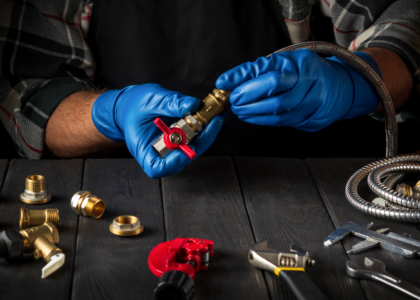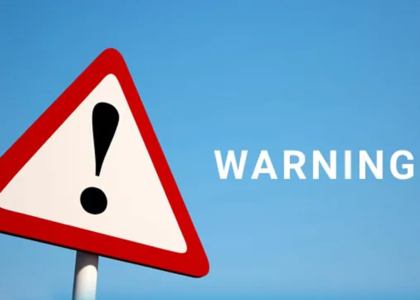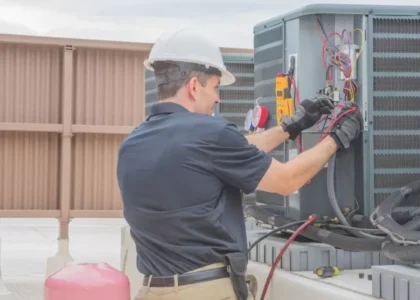In the realm of construction, safety is paramount, especially when it comes to Mechanical, Electrical, and Plumbing (MEP) systems. These systems are critical to the functionality and comfort of buildings, but they also pose potential hazards if not designed, installed, and maintained according to established MEP safety standards. For more insights on maintaining HVAC systems, check out our HVAC Maintenance Guide for Businesses.
This article explores the key safety standards in MEP, ensuring compliance and outlining best practices that contribute to a safer construction environment.
Understanding MEP Safety Standards
Safety standards for MEP systems are developed by various organizations and regulatory
bodies to ensure the health and safety of workers and occupants. These standards cover a
wide range of aspects, including:
- Design and Installation: Guidelines for the safe design and installation of MEP systems,
focusing on minimizing risks and ensuring that systems are robust and reliable. - Testing and Commissioning: Procedures to verify that MEP systems operate as intended
without posing hazards. - Maintenance: Recommendations for ongoing maintenance and inspections to ensure
that systems remain safe throughout their lifecycle.
Key Safety Standards in MEP
1. National Fire Protection Association (NFPA) Standards
The NFPA sets forth regulations related to fire safety in MEP systems. Key standards
include:
- NFPA 70 (National Electrical Code): This code outlines safe electrical installation
practices to reduce the risk of electrical fires and shocks. - NFPA 13 (Standard for the Installation of Sprinkler Systems): This standard provides
guidelines for fire suppression systems, ensuring that buildings are adequately protected
against fire hazards.
2. Occupational Safety and Health Administration (OSHA) Regulations
OSHA regulations ensure workplace safety for all construction activities, including MEP
installation and maintenance. Compliance with OSHA standards involves:
- Proper training for workers on safety protocols.
- Implementation of Personal Protective Equipment (PPE) such as helmets, gloves, and
goggles. - Regular safety audits and inspections to identify and mitigate risks.
3. American Society of Heating, Refrigerating and Air-Conditioning Engineers
(ASHRAE)
ASHRAE standards focus on the safe design and operation of HVAC systems, emphasizing
energy efficiency and indoor air quality. Important standards include:
- ASHRAE 62.1: Guidelines for ventilation and acceptable indoor air quality.
- ASHRAE 15: Safety standard for refrigeration systems, addressing the safe handling of
refrigerants.
4. International Plumbing Code (IPC)
The IPC provides regulations governing plumbing system design and installation, ensuring
safe and sanitary water supply and waste management. Key aspects include:
- Requirements for backflow prevention to protect water supplies.
- Proper sizing and installation of plumbing fixtures to prevent leaks and overflows.
Best Practices for Ensuring MEP Safety
Providing ongoing training for all personnel involved in the design, installation, and
maintenance of MEP systems is essential. This includes:
- Safety Training: Regular workshops on safety protocols, hazard recognition, and
emergency response. - Certification Programs: Encouraging staff to obtain certifications related to MEP
standards and safety practices.
2. Regular Inspections and Audits
Conducting frequent inspections and safety audits can identify potential hazards before
they escalate. This involves:
- Routine Checks: Scheduled inspections of MEP systems to ensure compliance with
safety standards. - Documentation: Keeping detailed records of inspections, maintenance, and any
corrective actions taken.
3. Implementing Safety Protocols
Establishing clear safety protocols for all MEP-related activities is crucial. This includes:
- Lockout/Tagout Procedures: Ensuring that all equipment is properly shut down and
secured during maintenance to prevent accidental energization. - Emergency Response Plans: Developing and communicating emergency plans for
potential incidents related to MEP systems, including electrical fires and plumbing
failures.
4. Utilizing Technology
Leveraging technology can enhance safety in MEP operations. This may involve:
- Building Information Modeling (BIM): Using BIM to visualize MEP systems during the
design phase to identify potential hazards and conflicts before installation. - Smart Sensors: Implementing smart sensors to monitor system performance and alert
personnel to any irregularities that may pose safety risks.
Conclusion:
Ensuring safety standards in MEP systems is not just a regulatory requirement; it is a
fundamental aspect of responsible construction management. By adhering to established
safety standards, providing ongoing training, conducting regular inspections, and
implementing best practices, construction companies can mitigate risks and ensure a safe
working environment. Prioritizing safety not only protects workers but also enhances the
overall reliability and performance of MEP systems, contributing to the success of
construction projects and the well-being of building occupants.






